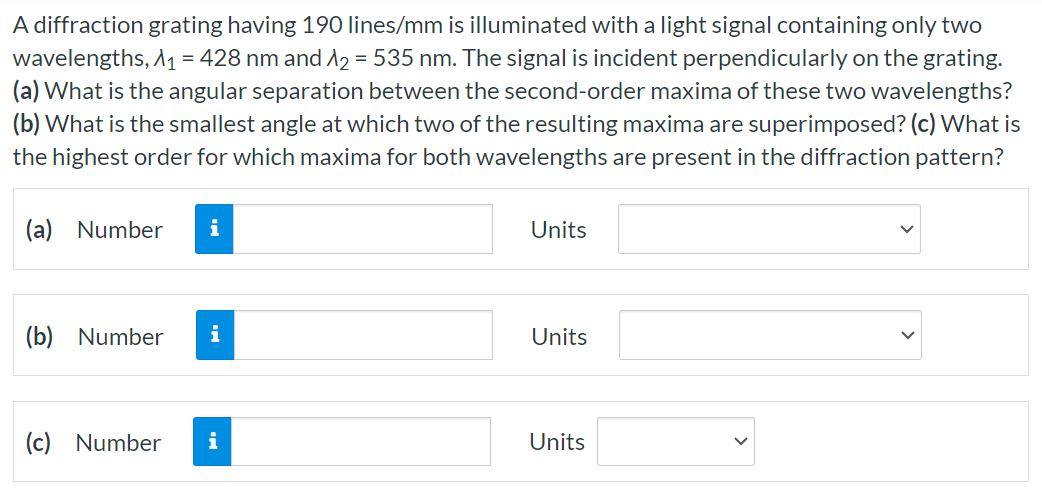A diffraction grating having 190 lines/mm is illuminated with a light signal containing only two wavelengths, λ1 = 428 nm and λ2 = 535 nm. The signal is incident perpendicularly on the grating. (a) What is the angular separation between the second-order maxima of these two wavelengths? (b) What is the smallest angle at which two of the resulting maxima are superimposed? (c) What is the highest order for which maxima for both wavelengths are present in the diffraction pattern? (a) Number Units (b) Number Units (c) Number Units
